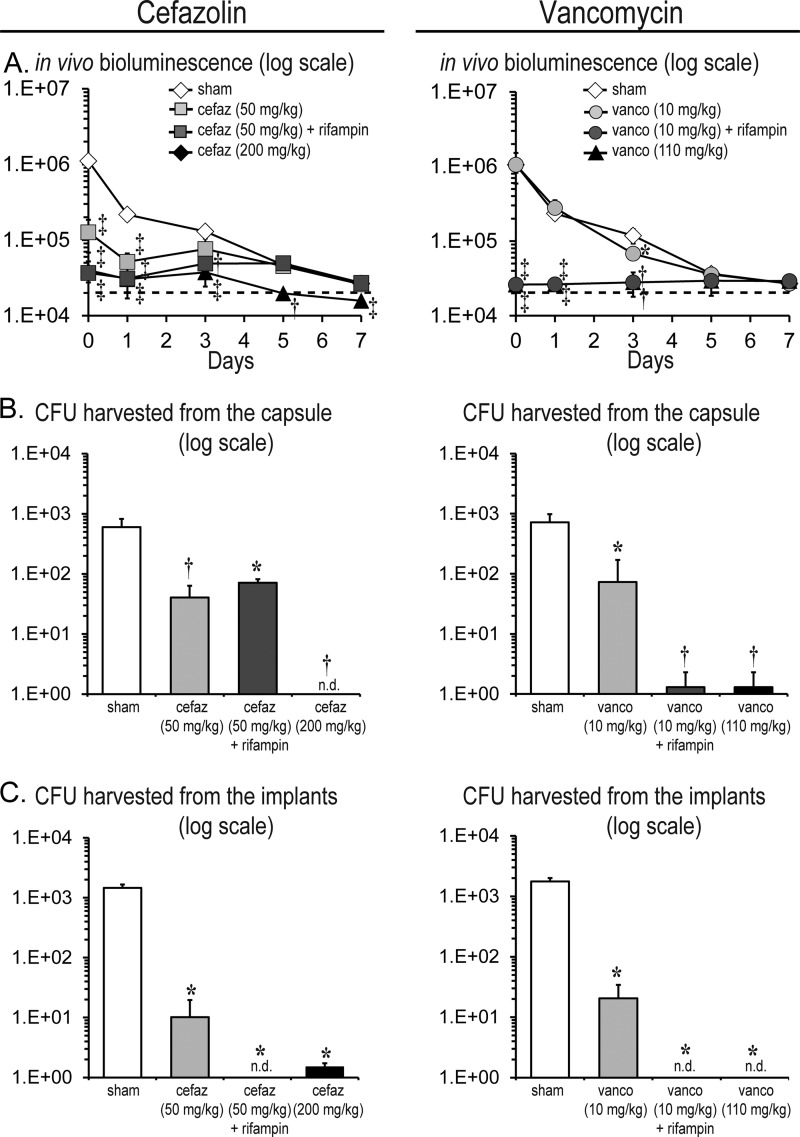FIG 5.
Efficacy of prophylactic antibiotic therapy. A medical-procedure-grade titanium disc incubated with a bioluminescent S. epidermidis strain (1 × 108 CFU) was surgically placed into a subcutaneous pocket on the backs of mice to model an implant-related infection (n = 5 to 10 per group). The following prophylactic antibiotic treatment or sham treatment with sterile saline solution (sham) was administered to the mice 30 min preoperatively: cefazolin (cefaz; 50 mg/kg of body weight) ± rifampin (25 mg/kg) or cefazolin (200 mg/kg) (left panels) or vancomycin (vanco; 10 mg/kg) ± rifampin (25 mg/kg) or vancomycin (110 mg/kg) (right panels). (A) Bacterial burden as measured by in vivo bioluminescence (mean total flux [photons/s] ± standard error of the mean) (logarithmic scale). The dotted line denotes the level of background bioluminescence. (B and C) On postoperative day 7, the capsules and titanium discs were harvested and the numbers of bacteria (mean CFU ± standard error of the mean [logarithmic scale]) isolated from the capsules (B) and implants (C) were determined. *, P < 0.05; †, P < 0.01; ‡, P < 0.001 (prophylactic antibiotic-treated mice versus sham treatment; Student's t test [two tailed]). n.d. = none detected.

